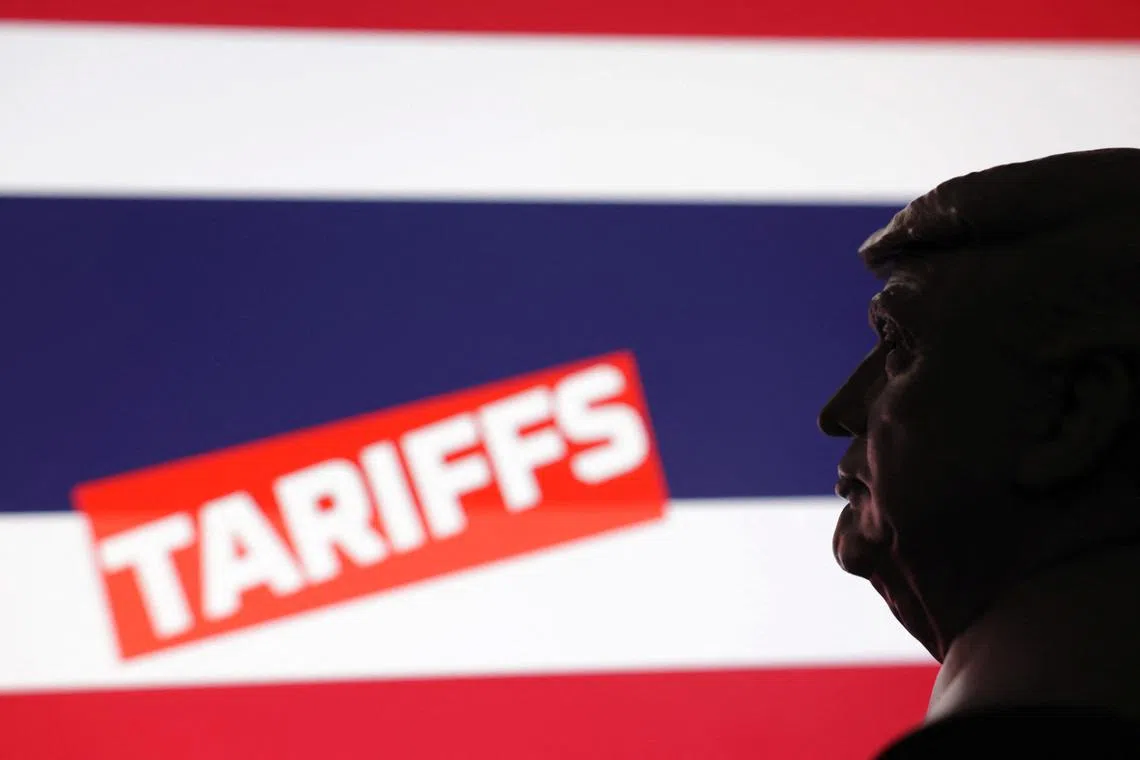Trump sets 19% tariff on Cambodia and Thailand after peace deal
Sign up now: Get insights on Asia's fast-moving developments

Thailand had offered greater market access for US products by pledging to scrap tariffs on 90 per cent of its goods.
PHOTO: REUTERS
Follow topic:
BANGKOK – The US set a 19 per cent levy on imports from Cambodia and Thailand, lower than the 36 per cent they originally faced, after US President Donald Trump earlier in July threatened to block trade deals with them unless they ended a deadly border clash.
Malaysia, which helped broker the ceasefire, was also set at 19 per cent. That is on par with previously announced rates for South-east Asian neighbours Indonesia and the Philippines.
Earlier this week, the leaders of Cambodia and Thailand agreed to an immediate ceasefire to halt the worst clashes between the two nations in more than a decade, which left more than 40 people.
The truce, however, has been tested with Thailand accusing Cambodian troops of unprovoked firing in violation of the agreement.
The new rates were unveiled alongside Mr Trump’s announcement that the US will keep minimum global tariff rates at 10 per cent, lower than an earlier threatened floor of 15 per cent or higher, according to a White House statement on July 31.
Cambodian Prime Minister Hun Manet on Aug 1 said a tariff rate of 19 per cent imposed by Washington was good news for the people and economy of Cambodia.
Thailand on Aug 1 welcomed the 19 per cent trade tariff as a “major success”.
“It represents a win-win approach aimed at preserving Thailand’s export base and long-term economic stability,” government spokesman Jirayu Huangsab said in a statement.
US Commerce Secretary Howard Lutnick on July 30 night announced in an interview that the US had secured deals with both Thailand and Cambodia but did not provide additional details.
Recent days have seen a flurry of deals and tariff demands on partners, announcing an agreement with South Korea that would levy 15 per cent duties on its exports to the US and saying he would impose a 25 per cent rate on goods from India.
In a last-minute bid to avoid a higher punitive tariff, Thailand had offered greater market access for US products by pledging to scrap tariffs on 90 per cent of its goods. It also promised to take non-tariff measures to cut its US$46 billion (S$60 billion) trade surplus by 70 per cent within three years, in addition to tackling the rerouting of goods produced in other countries.
Before the tariff announcement, Thai Finance Minister Pichai Chunhavajira said he expected the US to set a rate similar to its South-east Asian neighbours, which have seen rates around 20 per cent. The US was Thailand’s largest goods export market in 2024, accounting for about 18 per cent of the country’s total shipments.
Clinching a lower US tariff rate is seen as key to insulating Thailand’s trade-dependent economy from further downside. Growth is already under pressure from South-east Asia’s highest household debt and sluggish domestic consumption. Bloomberg

